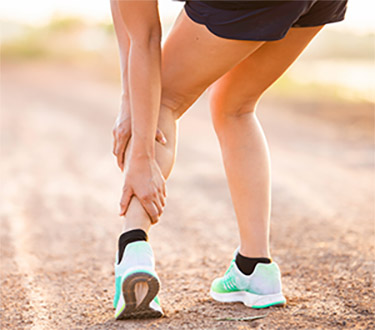YOUR BODY IS A MASTERPIECE OF MUSCLES ATTACHED TO JOINTS OF THE BODY!
The muscular system is responsible for the movement of human body. Attached to the bones of the skeletal system are about 700 named muscles that make up roughly half of a persons body weight. Each of the muscles is a discrete organ constructed of skeletal muscle tissue, blood vessels, tendons and nerves.ib
MUSCULAR STRUCTURE
Muscles are either contracting or relaxing to cause movement, and groups of muscles act together to create motion. For example, to extend the knee a group of four muscles (the quadriceps) are activated. To flex the knee, an opposite group of muscles are activated (the hamstrings).
When the muscle contracts, the attachment points are pulled closer together; when it relaxes, the attachment points move apart.
Muscles contract and relax to move bones. The elbow joint bends (flexes) when muscles pull on the radius and ulna of the arm.
Everything is intertwined and no one muscle or muscle group acts entirely on its own.
MUSCLE BALANCE
For active people – amateur and professional athletes, active sport adults, workers, military personnel, and especially senior citizens – the ability of the body to move and perform naturally is directly associated with the balance and stability of their muscles, tendons, and joints.
Injuries or weaknesses to one or more muscles creates restriction and imbalance and leads reduced physical performance. Muscle contraint usually consists of two or more opposing muscles, one being overactive or too tight while the other is underactive or too loose.
Muscular weakness is one of the primary causes of musculoskeletal imbalance – which is a major culprit of many strains and lessened performance occurring during physical activities and workouts. The most common places for muscular imbalances are knees, hips and shoulders.
Muscular balance, also known as muscular symmetry refers to the state in which the muscles on both sides of a joint or the muscles that act in opposition to each other are well-developed and have similar strength and flexibility. Having good muscular balance is essential for overall musculoskeletal health and functional movement. Muscles in the body work in pairs or groups, with one muscle (agonist) contracting to produce a specific movement while the opposing muscle (antagonist) relaxes to allow that movement to occur smoothly. For example, when you bend your elbow, the biceps muscle contracts as the agonist, while the triceps muscle relaxes as the antagonist.
Having muscular balance helps ensure that the forces acting on joints are distributed evenly, reducing the risk of injury and promoting efficient movement. Here are some key aspects of muscular balance:
Symmetry: Muscular balance involves having similar muscle size and strength on both sides of the body. Imbalances can occur due to various reasons, such as favoring one side during certain activities or workouts, which may lead to an increased risk of injury and altered movement patterns.
Flexibility: Muscular balance also includes having balanced flexibility between muscle groups. Tight muscles can limit the range of motion in joints and increase the risk of strains or sprains. Proper flexibility training can help maintain joint mobility and reduce the risk of imbalances.
Stabilization: Muscular balance is crucial for joint stabilization. Muscles that act as stabilizers play a significant role in supporting joints during movement and maintaining proper alignment. Weak or imbalanced stabilizing muscles can lead to joint instability and compensatory movements, potentially leading to injuries.
Core Strength: A well-balanced core, which includes the muscles of the abdomen, lower back, and pelvis, is vital for maintaining proper posture, stability, and efficient movement. Core strength helps protect the spine and provides a solid foundation for various athletic activities.
Cross-Training: Engaging in a variety of exercises and activities can promote muscular balance. Cross-training involves participating in different types of exercises and sports, which can help work different muscle groups and reduce the risk of overuse injuries.
Correcting Imbalances with a FitAssess Assessment: The FitAssess Assessment identifies muscular instabilities, weaknesses and imbalances in the body - and provides targeted stretch-band exercises and corrective movements that can be incorporated into a prescriptive workout routine to address these issues.
Maintaining muscular balance is not only crucial for athletes but also for individuals engaging in everyday activities. Regular strength training, flexibility exercises, and along with regular FitAssess Assessments provide proper movement patterns can help promote muscular balance and overall musculoskeletal health, leading to improved performance, reduced risk of injury, and enhanced quality of life.
MUSCULAR RESTRICTIONS AND WEAKNESSES
